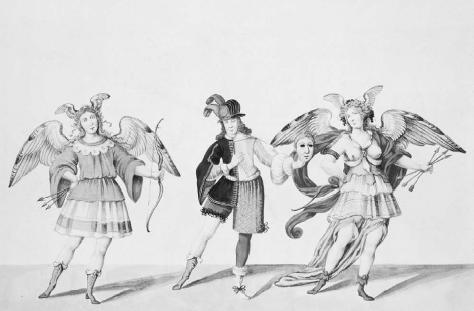March 2, 2014 (Tokyo)
Last night I saw a performance of the ballet “The Loves of Mars and Venus” originally choreographed by John Weaver in London in 1717. Oddly enough, this is the first time that Tokyo had this ancient ballet performed in one of their newer theaters. It is thought to be the first ballet that conveyed a narrative of sorts. Although at its time, the ballet was popular, yet, the original music doesn’t exist anymore. In 1955, Rivierside Records’ Orrin Keepnews commissioned one of the artists on his label Thelonious Monk, to write an updated version of the ballet. Keepnews changed the location from London to Tokyo, and now the ballet conveys the Great Fire of Meireki, which took place in Edo (now known as Tokyo) in 1657, and it is reported that 100,000 people died from this fire. Mostly due to the structures that were made by wood and paper, and all of them were close together with very little or no space between the premises. Ironically Keepnews participated in the bombings of Japan during the latter months of World War 2. Whatever there is a connection between the bombings and the fire in Keepnews’ thoughts, are unknown to us.
Monk based some of the melodies on Kurt Weill’s music for the “The Three-Penny Opera, ” which gives it a strong European feel to the piece. As close as possible, they kept the Weaver choreography, but surely over time there must have been many changes with respect to the dancing for this ballet. Like folk music, ballet too can change from time-to-time, and in this case from century to century.
For the current production in Tokyo, they based the sets on drawings by Dr. Seuss, which gave it a whimsical touch but with some poison mixed in as well. The odd juxtaposition of the different elements in the ballet makes it a flawed, but a very interesting experience. My friend Jennifer came with me and she thought it was ‘just’ OK, but I believe it was a bit more than that. Overall I liked how Keepnews' made this giant leap into the ballet world, in fact, how can a man who started an amazing jazz label, as well as producing some of the greatest music of the 20th century got involved in such a vision. War has often led one to major disappointments, and perhaps his experience as a bomber in World War 2 somehow led him to do this ballet, and perhaps seeing or being involved in the horrors that took place in Japan at the time, sort of see this work as a positive thing to place on this planet. But then again, who knows? After the performance Jennifer and I went to Reco-Fan in Shibuya to see if I can locate some obscure recordings by The Shadows. Lately I have this need to collect recordings by Tony Meehan, who was their drummer and was a major player in the U.K. before The Beatles hit it big. I have a huge fascination with the world right before the Fab Four hit it big time. In Japan, as well. Probably the most important thing that happened for Japanese pop music is the appearance of The Ventures, who toured here in 1961. After that tour, many Japanese young men got their first electric guitar.
I’m always impressed how culture goes back and forth between the West and the East. Tomorrow I’m having lunch with Kiichiro who is translating a novel by David Goodis, who I believe will be the perfect fit for contemporary Japanese readers.


























No comments:
Post a Comment